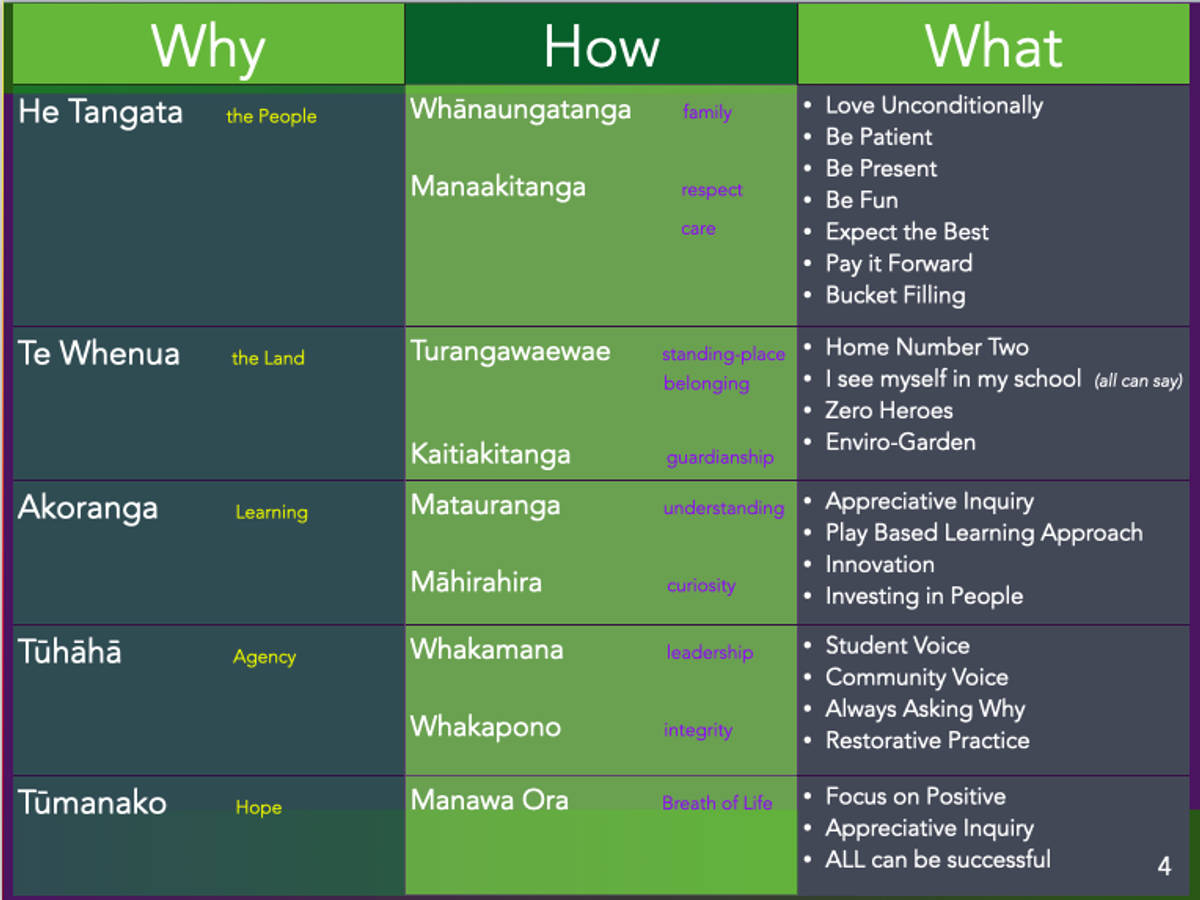My Five WHYS: 5

This week I will share part five of my Five Whys. The Five really big ideas that shape the way I believe education should be driven.
Why Number Five - Tūmanako - Hope
Hope is Manawa Ora - the Breath of Life.
Sooner or later life introduces us vividly to our need for Hope. Some people believe Hope is an attitude, an optimism, or faith that everything will be okay regardless of the outcome.
Think about it... If you take away Hope, you're left with Hopelessness. Martin Luther King, Jr. said "If you lose hope, somehow you lose the vitality that keeps life moving, you lose that courage to be, that quality that helps you go on in spite of it all. And so today I still have a dream."
Covid19 is pretty daunting right now, but I have a very strong hope that humanity will find a way to prevail, just as it always has. I believe it is my responsibility as a principal to communicate Hope to my children and my staff. Not false or foolish hope, but researched hope. It is my responsibility to be informed, to read widely and consider reflectively so that I can share genuine reasons for hope.
Again quoting Dr Martin Luther King Jr., "“Everything worthwhile that is done in the world is done by hope.”
My research conducted for my Masters in Contemporary Education indicated our children at this point in their lives are more at risk mentally and emotionally than they are necessarily at risk physically, from climate change. From experience, I see children worried about the impacts of climate change. These worries can get in the way of their general wellbeing.
The antidote to the mental and emotional risks children are surrounded by is Hope. Gwinn, Casey, Hellman, Chan PhD identify Hope as the most predictive indicator of wellbeing in a person’s life. (*See paragraph expanding on this below.)
Empowering young people to take action generates Hope. Action helps overcome the stasis of a sense of hopelessness and helplessness. We can support our young people to take action and make a difference as PALS – People And Land Savers – in purpose and practice.
How does that work?
In "Life's Great Question: Discover How You Contribute To The World," by Tom Rath, Rath offers hope to us all that we can make a difference, and be the difference the world needs.
The book opens with, “Life’s most persistent question is: What are you doing for others?”
“A growing body of evidence suggests that the single greatest driver of both achievement and wellbeing is understanding how your daily efforts enhance the lives of others.
Scientists have determined that human beings are innately other-directed, which they refer to as being ‘prosocial.’ According to top researchers who reviewed hundreds of studies on this subject, the defining features of a meaningful life are connecting and contributing to something beyond the self.”
We live this principle at Western Heights School with our focus on Being Kind; in our expectation that every class every year will complete a 'Pay It Forward' project; and in our new approach to HOPE - where HOPE stands for Help One Person Everyday.
* Hope Rising: How the Science of HOPE Can Change Your Life. Gwinn, Casey J.D., Hellman, Chan PhD (2018). Morgan James Publishing
Based on nearly 2,000 published studies about hope, including their research, Gwinn and Hellman identify Hope as the most predictive indicator of wellbeing in a person’s life. They call for rising hope to be the focus in personal lives, public policy in education, business, social services, and every other part of society.
In the introduction, they state, “Hope is not just an idea. Hope is not simply an emotion. It is far more than a feeling. It is not a wish or even an expectation. Hope is about goals, willpower, and pathways. A person with high hope has goals, the motivation to pursue them, and the determination to overcome obstacles and find pathways to achieve them. Hope is a science with identifiable, measurable elements. It is measurable, and it is malleable.”
Even before the advent of Covid19, there was an increasing focus in education, and in broader society, on wellbeing. Our Prime Minister’s persistent focus on kindness is an example of this. Post Covid19 there has been a greater focus on wellbeing, for students, staff and even principals. Since Gwinn and Hellman identify Hope as the greatest predictor of wellbeing in a person’s life, a focus on Hope is therefore vitally important.
Conclusion:
“If you look for problems, you will find problems; if you look for solutions, you will find solutions.” Andy Gilbert (https://www.gomadthinking.com)
The time is well and truly upon us for a paradigm shift in our approach to teaching and learning. The future of our planet and our species depends upon this. It is time for deep and hopeful reflection, and that reflection must be accompanied by action. Otherwise, it is purposeless and pointless.
Our Hope into Action and Learning into Action approach defines a starting point and can be a catalyst leading to a broader discussion as to the purpose of education. This approach, in turn, can lead to a change in Mindset, for teachers and students, and leadership across all areas of society.
I hope it does.

